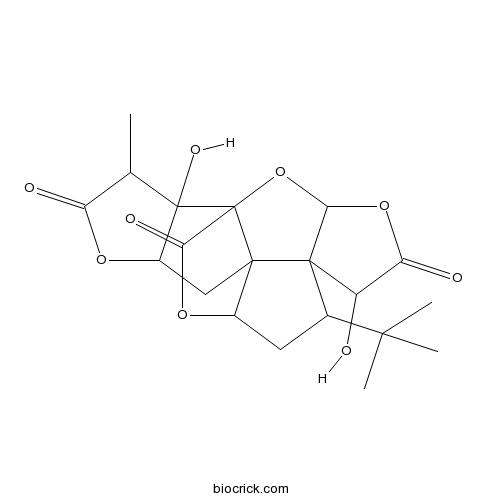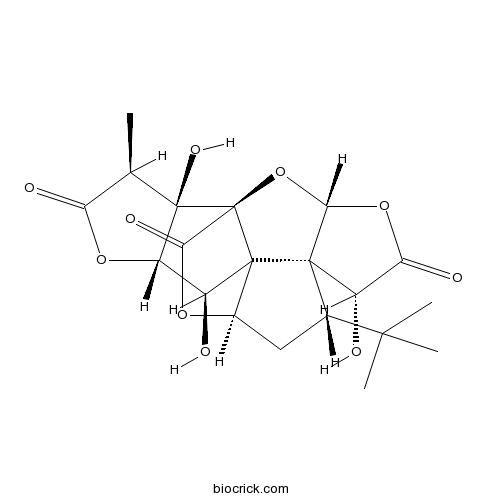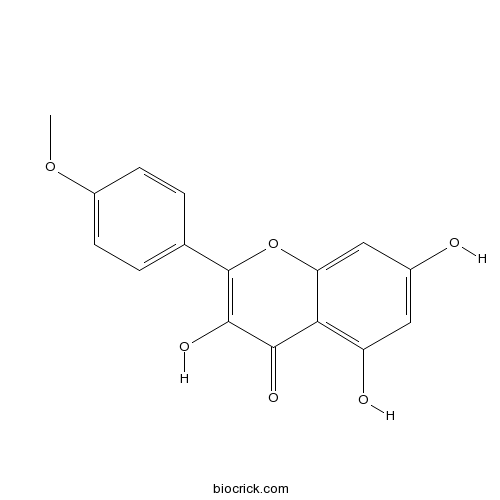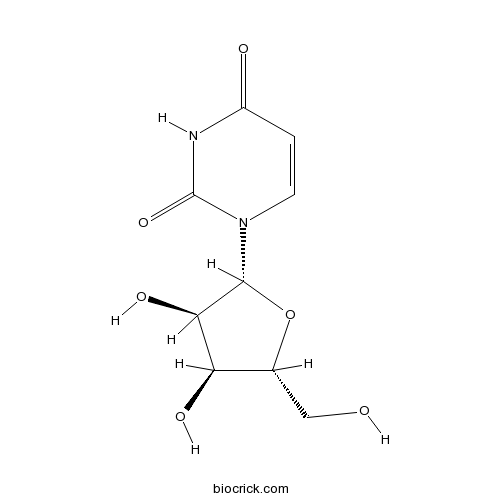Physalis philadelphica
Physalis philadelphica
1. The products in our compound library are selected from thousands of unique natural products; 2. It has the characteristics of diverse structure, diverse sources and wide coverage of activities; 3. Provide information on the activity of products from major journals, patents and research reports around the world, providing theoretical direction and research basis for further research and screening; 4. Free combination according to the type, source, target and disease of natural product; 5. The compound powder is placed in a covered tube and then discharged into a 10 x 10 cryostat; 6. Transport in ice pack or dry ice pack. Please store it at -20 °C as soon as possible after receiving the product, and use it as soon as possible after opening.
Natural products/compounds from Physalis philadelphica
- Cat.No. Product Name CAS Number COA
-
BCN1680
Ginkgolide A15291-75-5
Instructions

-
BCN1682
Ginkgolide B15291-77-7
Instructions

-
BCN5246
Oleuropein32619-42-4
Instructions

-
BCN5598
Kaempferide491-54-3
Instructions

-
BCN4090
Uridine58-96-8
Instructions

Cytotoxic and other withanolides from aeroponically grown Physalis philadelphica.[Pubmed: 29775868]
Eleven withanolides including six previously undescribed compounds, 16β-hydroxyixocarpanolide, 24,25-dihydroexodeconolide C, 16,17-dehydro-24-epi-dioscorolide A, 17-epi-philadelphicalactone A, 16-deoxyphiladelphicalactone C, and 4-deoxyixocarpalactone A were isolated from aeroponically grown Physalis philadelphica. Structures of these withanolides were elucidated by the analysis of their spectroscopic (HRMS, 1D and 2D NMR, ECD) data and comparison with published data for related withanolides. Cytotoxic activity of all isolated compounds was evaluated against a panel of five human tumor cell lines (LNCaP, ACHN, UO-31, M14 and SK-MEL-28), and normal (HFF) cells. Of these, 17-epi-philadelphicalactone A, withaphysacarpin, philadelphicalactone C, and ixocarpalactone A exhibited cytotoxicity against ACHN, UO-31, M14 and SK-MEL-28, but showed no toxicity to HFF cells.
RNA1-Independent Replication and GFP Expression from Tomato marchitez virus Isolate M Cloned cDNA.[Pubmed: 26756828]
Tomato marchitez virus (ToMarV; synonymous with Tomato apex necrosis virus) is a positive-strand RNA virus in the genus Torradovirus within the family Secoviridae. ToMarV is an emergent whitefly-transmitted virus that causes important diseases in tomato (Solanum lycopersicum) in Mexico. Here, the genome sequence of the ToMarV isolate M (ToMarV-M) was determined. We engineered full-length cDNA clones of the ToMarV-M genomic RNA (RNA1 and RNA2), separately, into a binary vector. Coinfiltration of both triggered systemic infections in Nicotiana benthamiana, tomato, and tomatillo (Physalis philadelphica) plants and recapitulated the biological activity of the wild-type virus. The viral progeny generated from tomato and tomatillo plants were transmissible by the whitefly Bemisia tabaci biotype B. Also, we assessed whether these infectious clones could be used for screening tomato cultivars for resistance to ToMarV and our results allowed us to differentiate resistant and susceptible tomato lines. We demonstrated that RNA1 of ToMarV-M is required for the replication of RNA2, and it can replicate independently of RNA2. From this, ToMarV-M RNA2 was used to express the green fluorescent protein in N. benthamiana plants, which allowed us to track cell-to-cell movement. The construction of full-length infectious cDNA clones of ToMarV-M provides an excellent tool to investigate virus-host-vector interactions and elucidate the functions of torradovirus-encoded proteins or the mechanisms of replication of torradovirus genomic RNA.
New antiinflammatory sucrose esters in the natural sticky coating of tomatillo (Physalis philadelphica), an important culinary fruit.[Pubmed: 26593547]
Tomatillo is a popular culinary fruit. The sticky material on its surface, consumed as part of the fruit, has never been investigated. Chemical characterization of sticky material on tomatillo fruits yielded five new sucrose esters, as confirmed by spectroscopic methods. The solvent extract of the sticky material from the whole fresh fruit and pure isolates showed antiinflammatory activity as confirmed by in vitro cyclooxygenase enzymes inhibitory assays. Five sucrose esters isolated at 100 μg/mL (153.8, 138.8, 136.2, 141.6 and 138.8 μM, respectively) inhibited cyclooxygenase-1 and -2 enzymes by 50%. The cyclooxygenase enzyme inhibitory activity of extract and isolates at 100 μg/mL was similar to non-steroidal antiinflammatory drugs aspirin, ibuprofen and naproxen, used as positive controls in the assay at 108, 12 and 15 μg/mL (600, 60 and 60 μM), respectively.
Regulatory change at Physalis Organ Size 1 correlates to natural variation in tomatillo reproductive organ size.[Pubmed: 24980282]
The genetic basis of size variation in the reproductive organs of tomatillo (Physalis philadelphica) is unknown. Here we report that the expression levels of the gene Physalis Organ Size 1 (POS1) are positively associated with size variation in P. philadelphica reproductive organs such flowers, berries and seeds. POS1 knockdown results in smaller flowers and berries with smaller cells as compared with their wild-type counterparts. Conversely, POS1 overexpression promotes organ size without increasing the cell number. The first introns of the POS1 alleles from the large, intermediate and small tomatillo groups contain one, two and three 37-bp repeats, respectively. Furthermore, our results show that copy variation of repeats in the first intron of POS1 alleles results in differential expression of this gene. Thus, co-variation in tomatillo reproductive organ sizes can be attributed to the novel regulatory variation in POS1.
RNA Interference towards the Potato Psyllid, Bactericera cockerelli, Is Induced in Plants Infected with Recombinant Tobacco mosaic virus (TMV).[Pubmed: 23824081]
The potato/tomato psyllid, Bactericera cockerelli (B. cockerelli), is an important plant pest and the vector of the phloem-limited bacterium Candidatus Liberibacter psyllaurous (solanacearum), which is associated with the zebra chip disease of potatoes. Previously, we reported induction of RNA interference effects in B. cockerelli via in vitro-prepared dsRNA/siRNAs after intrathoracic injection, and after feeding of artificial diets containing these effector RNAs. In order to deliver RNAi effectors via plant hosts and to rapidly identify effective target sequences in plant-feeding B. cockerelli, here we developed a plant virus vector-based in planta system for evaluating candidate sequences. We show that recombinant Tobacco mosaic virus (TMV) containing B. cockerelli sequences can efficiently infect and generate small interfering RNAs in tomato (Solanum lycopersicum), tomatillo (Physalis philadelphica) and tobacco (Nicotiana tabacum) plants, and more importantly delivery of interfering sequences via TMV induces RNAi effects, as measured by actin and V-ATPase mRNA reductions, in B. cockerelli feeding on these plants. RNAi effects were primarily detected in the B. cockerelli guts. In contrast to our results with TMV, recombinant Potato virus X (PVX) and Tobacco rattle virus (TRV) did not give robust infections in all plants and did not induce detectable RNAi effects in B. cockerelli. The greatest RNA interference effects were observed when B. cockerelli nymphs were allowed to feed on leaf discs collected from inoculated or lower expanded leaves from corresponding TMV-infected plants. Tomatillo plants infected with recombinant TMV containing B. cockerelli actin or V-ATPase sequences also showed phenotypic effects resulting in decreased B. cockerelli progeny production as compared to plants infected by recombinant TMV containing GFP. These results showed that RNAi effects can be achieved in plants against the phloem feeder, B. cockerelli, and the TMV-plant system will provide a faster and more convenient method for screening of suitable RNAi target sequences in planta.
Transcriptome-wide mining of the differentially expressed transcripts for natural variation of floral organ size in Physalis philadelphica.[Pubmed: 23081983]
Natural phenotypic variation, a result of genetic variation, developed during evolution in response to environmental selections. Physalis philadelphica, known as tomatillo in the Solanaceae, is rich in floral and post-floral organ size diversity. However, its genetic variation is unknown. Here P. philadelphica was classified into three groups with large, intermediate, and small reproductive organ size, and a positive correlation was observed between floral organ and berry sizes. Through cDNA-amplified fragment length polymorphism (AFLP) analyses, 263 differentially expressed transcript-derived fragments (TDFs) were isolated from two accessions with different floral organ sizes. The genes encode various transcription factors, protein kinases, and enzymes, and they displayed multiple expression patterns during floral development, indicating a complexity in the genetic basis of phenotypic variation. Detailed expression analyses revealed that they were differentially expressed during floral and post-floral development, implying that they have roles in the development of flowers and fruits. Expression of three genes was further monitored in 26 accessions, and in particular the expression variation of Pp30, encoding an AP2-like transcription factor, correlates well with the observed phenotypic variations, which strongly supports an essential role for the gene in the natural variation of floral and post-floral organ size in Physalis. The results suggest that alteration in the expression pattern of a few key regulatory genes in the developmental process may be an important source of genetic variations that lead to natural variation in morphological traits.
Philadelphicalactones C and D and other cytotoxic compounds from Physalis philadelphica.[Pubmed: 21497618]
Two new withanolides, philadelphicalactone C (1) and philadelphicalactone D (4), along with the known withaphysacarpin (3), ixocarpanolide (5), philadelphicalactone A (6), and ixocarpalactone A (7) were isolated from the aerial parts of Physalis philadelphica Lam. Structures of these compounds were determined by spectroscopic analyses and that of philadelphicalactone C (1) was confirmed by X-ray crystallographic analysis. Evaluation of the cytotoxic activity of all isolates and the derivative 2 against a panel of human cancer cell lines indicated a potent activity of compounds 2, 3, 6, and 7.
Effect of cooking processes on the contents of two bioactive carotenoids in Solanum lycopersicum tomatoes and Physalis ixocarpa and Physalis philadelphica tomatillos.[Pubmed: 17960090]
Calculation of the HPLC chromatographic retention times of different carotenoids supported our improved chromatographic separation of beta-carotene and lutein in four tomatoes and two tomatillo varieties in fresh form and after three different cooking procedures: pot boiling, cooking in a pressure cooker and microwaving. A good separation was achieved experimentally using an Ultrasphere ODS column and gradient elution with an acetonitrile-tetrahydrofuran-water mobile phase. It was shown that diverse tomato species contained different amounts of beta-carotene (6-400 microg/100 mg) and lutein (2-30 microg/100 mg). The concentration in fresh samples was higher than in cooked tomatoes. The beta-carotene content in fresh tomatillo varied between 2 and 20 microg/100 mg. Microwaving caused partial destruction of the beta-carotene and lutein in tomatillos.


